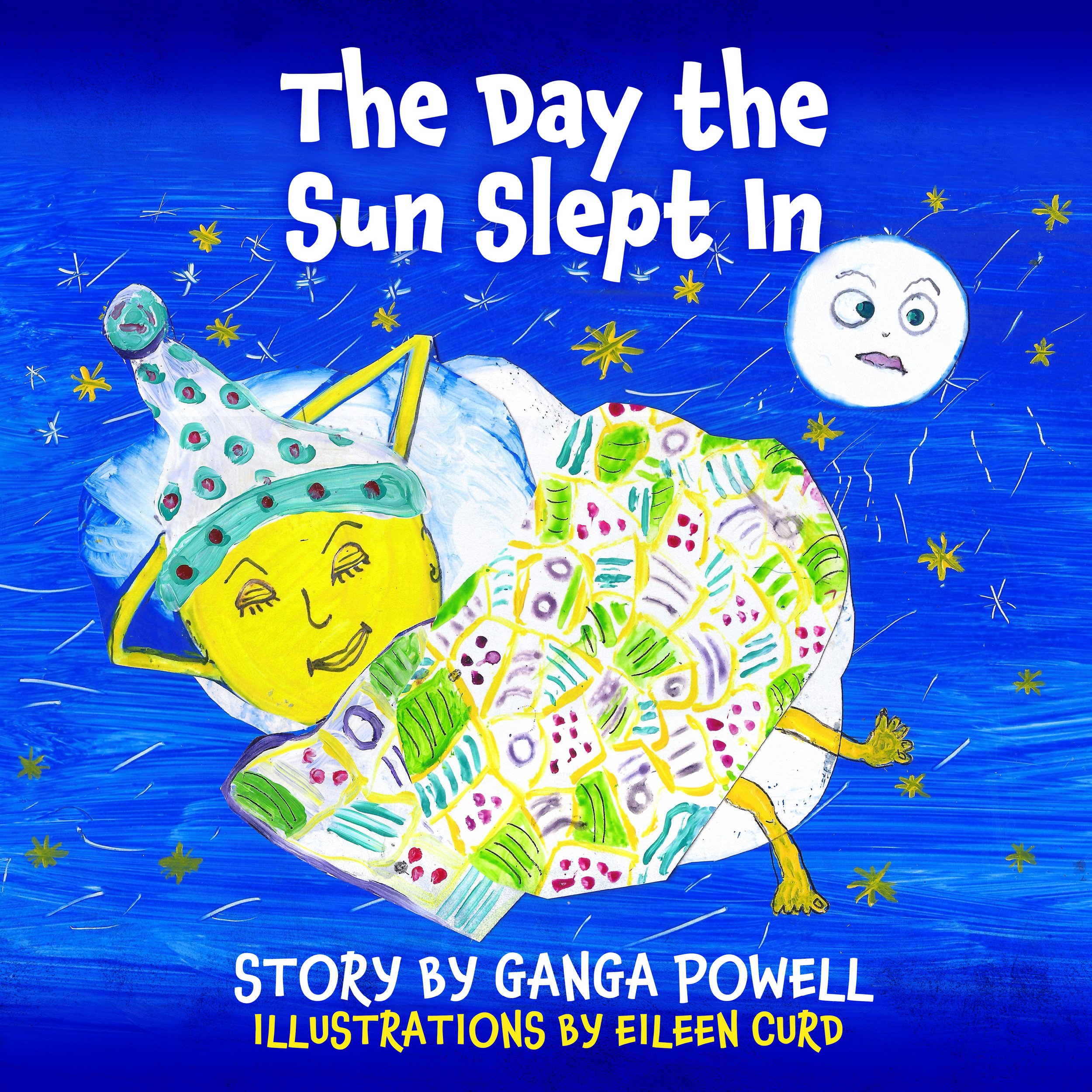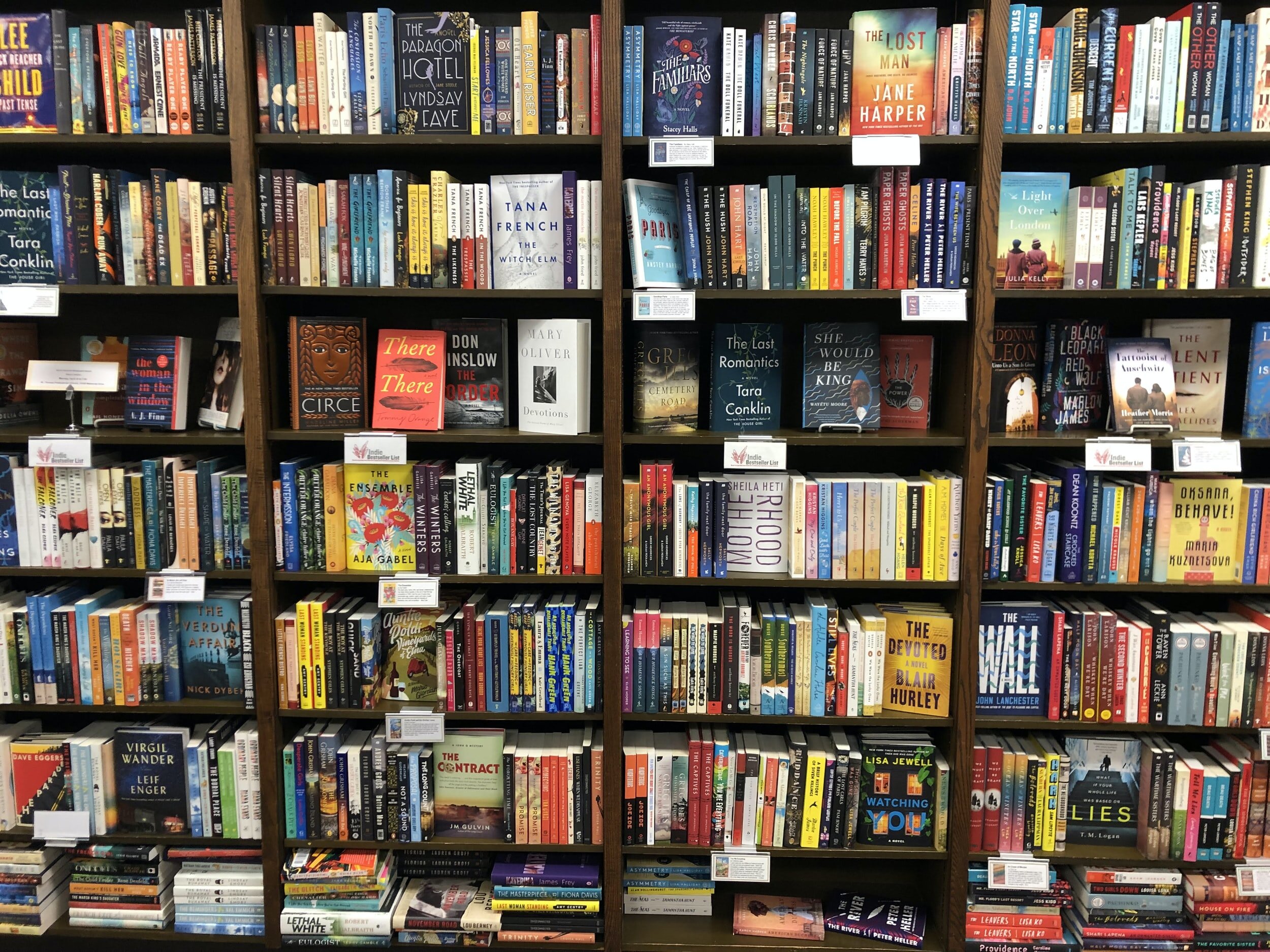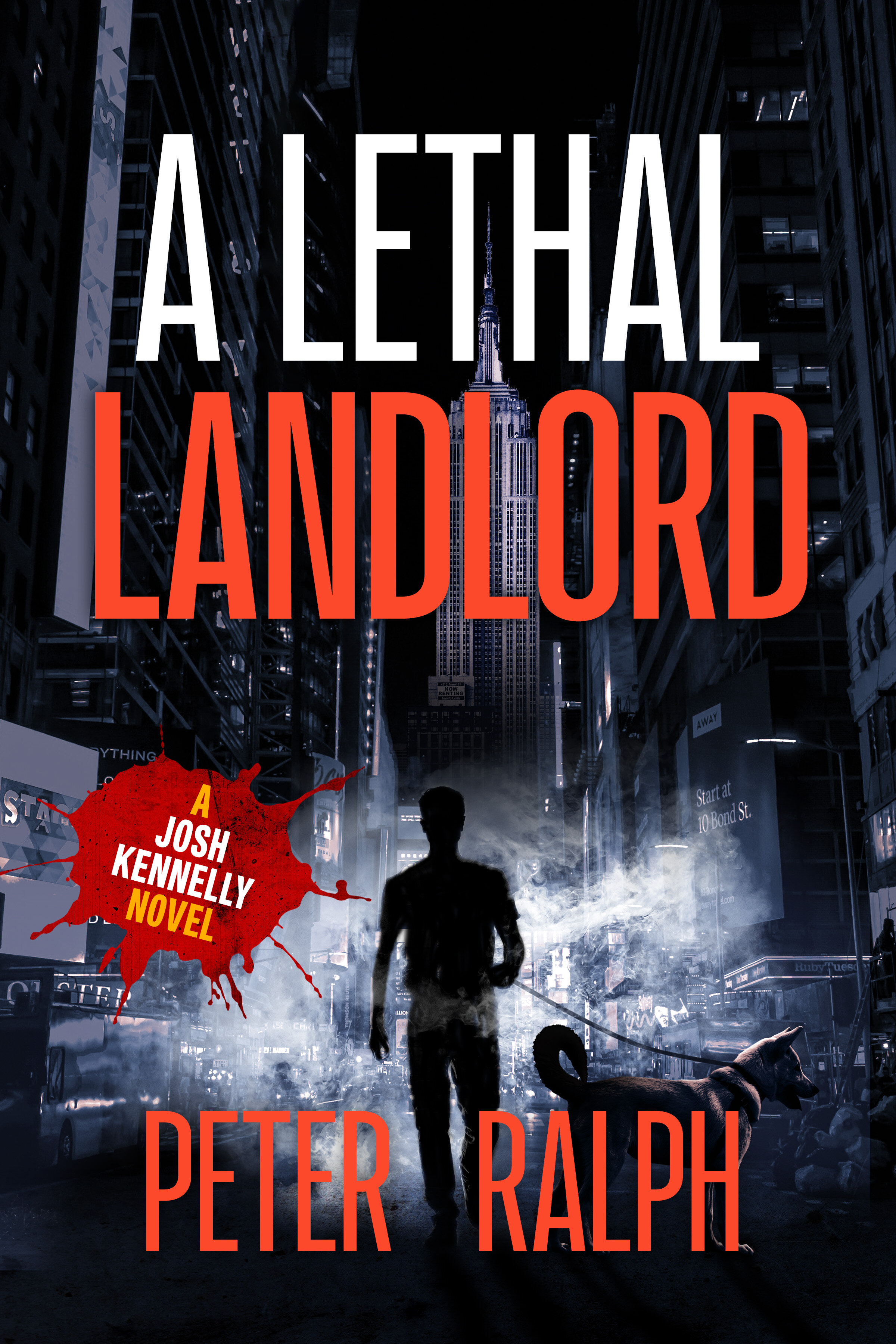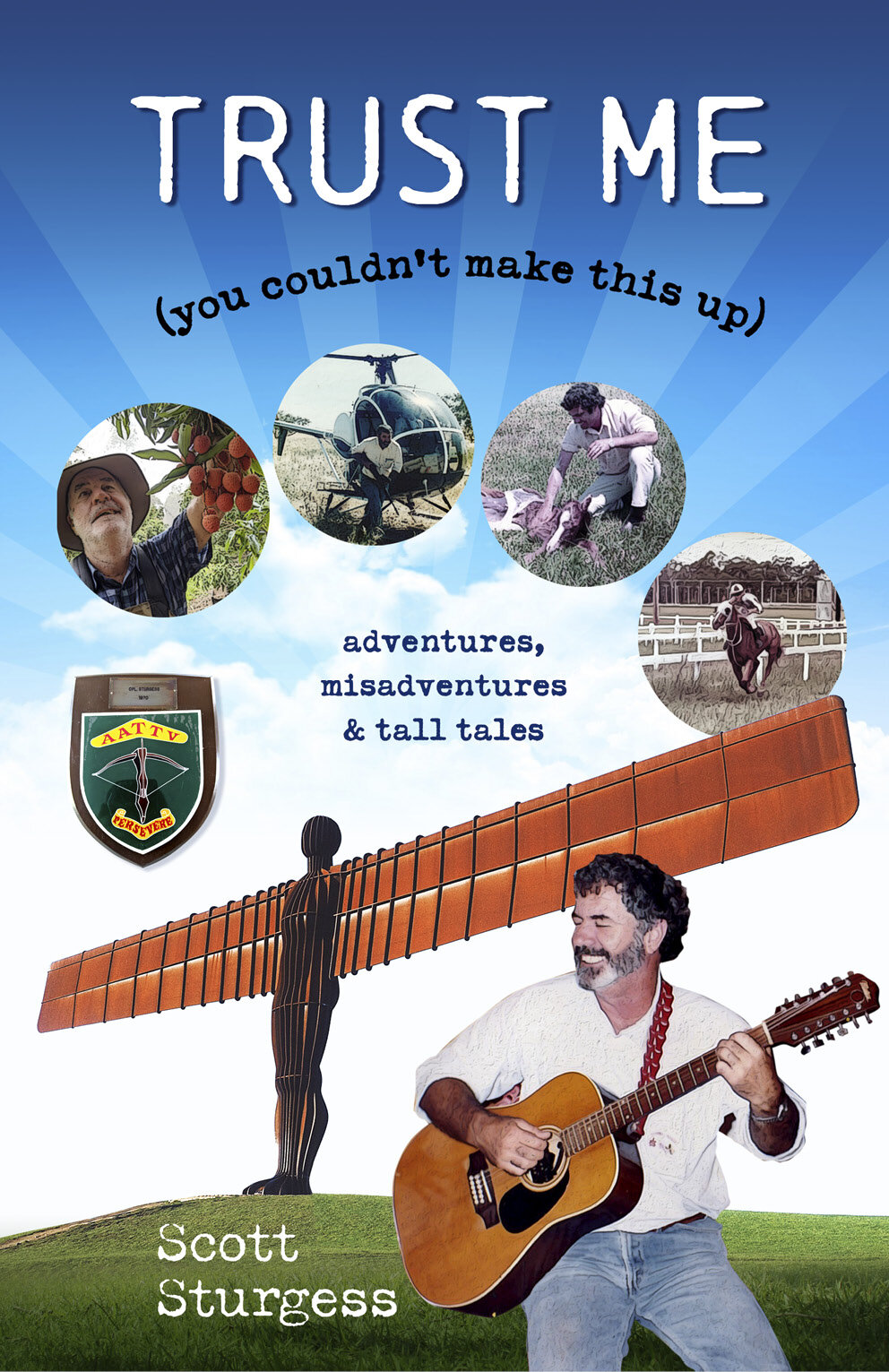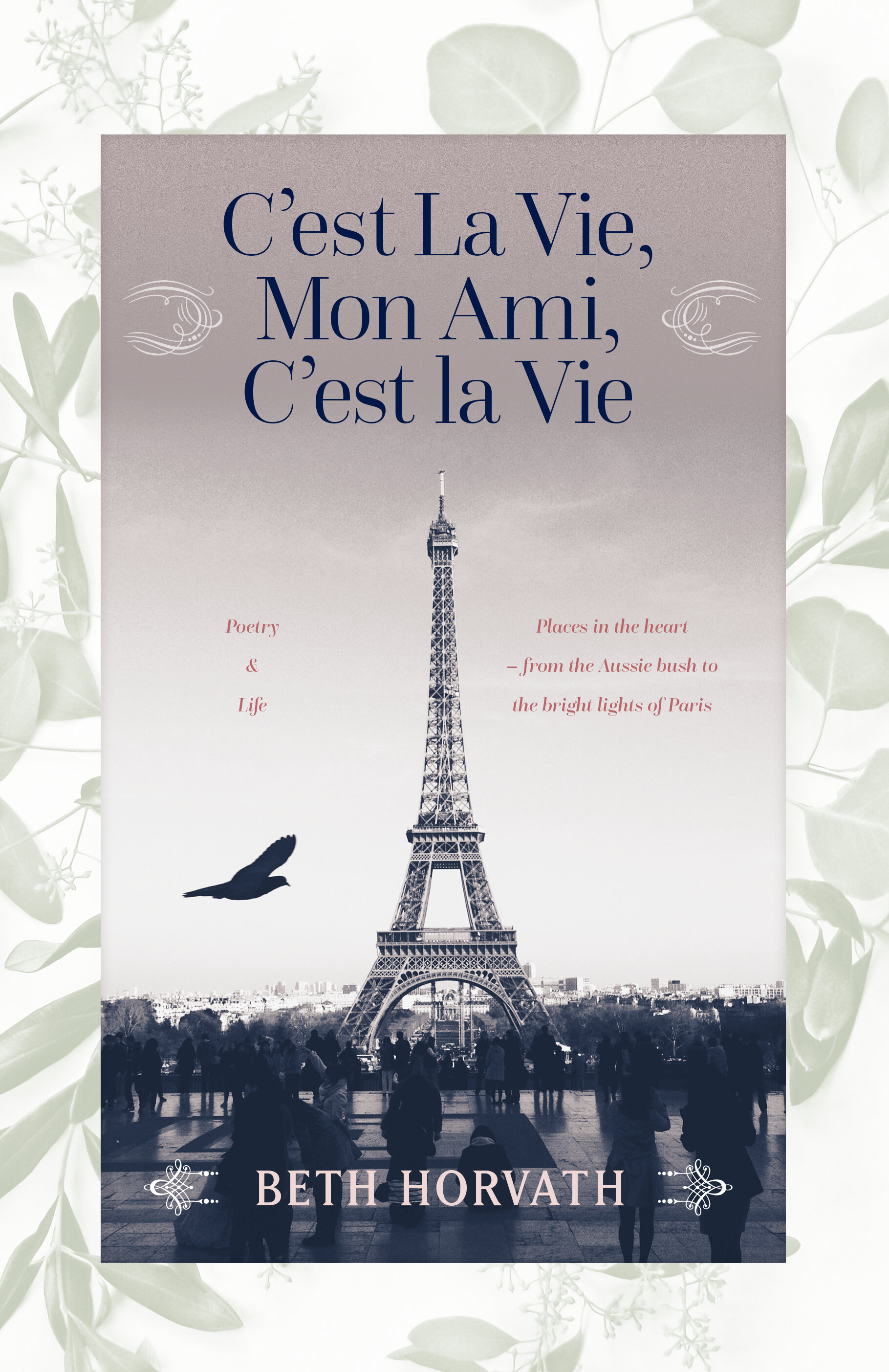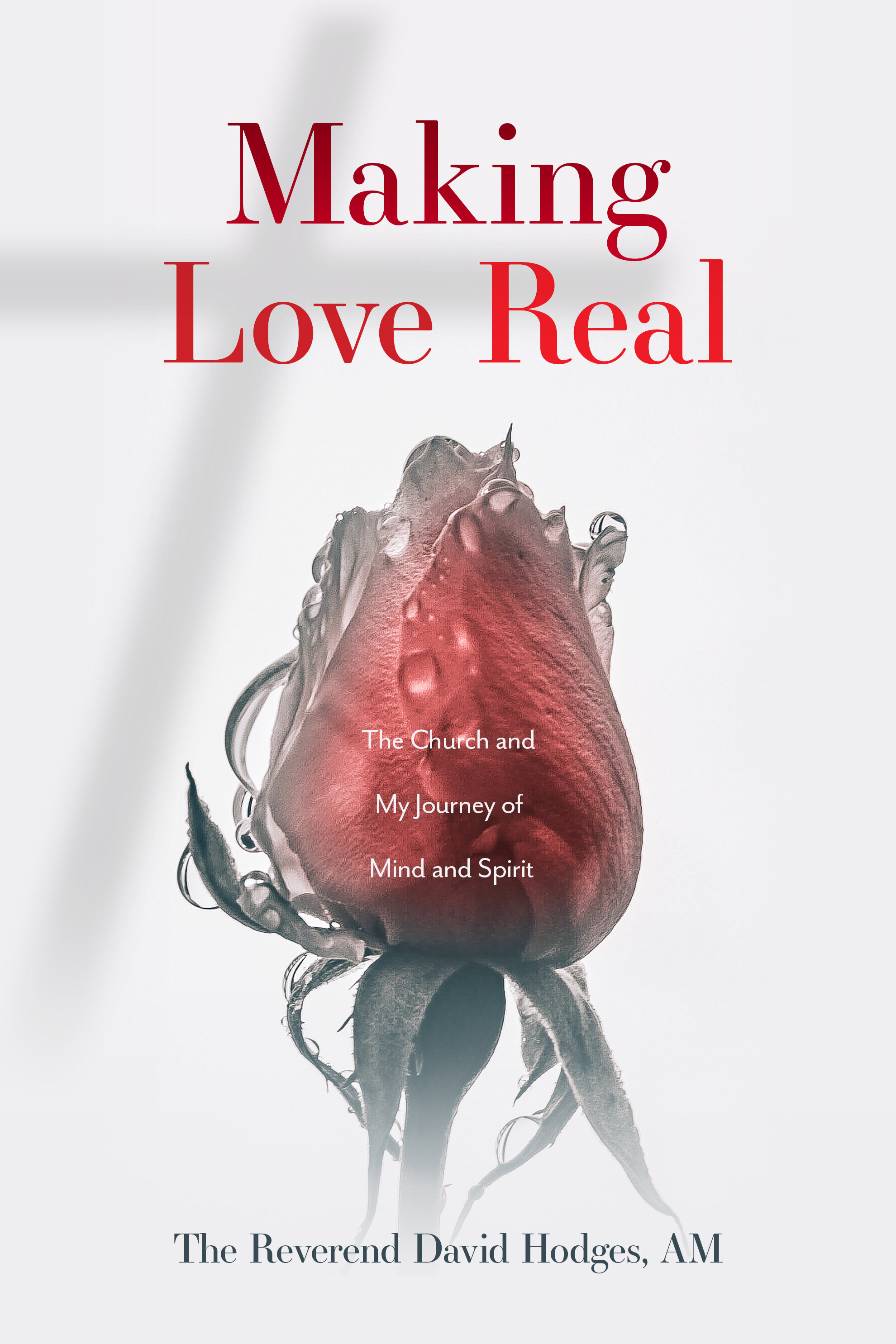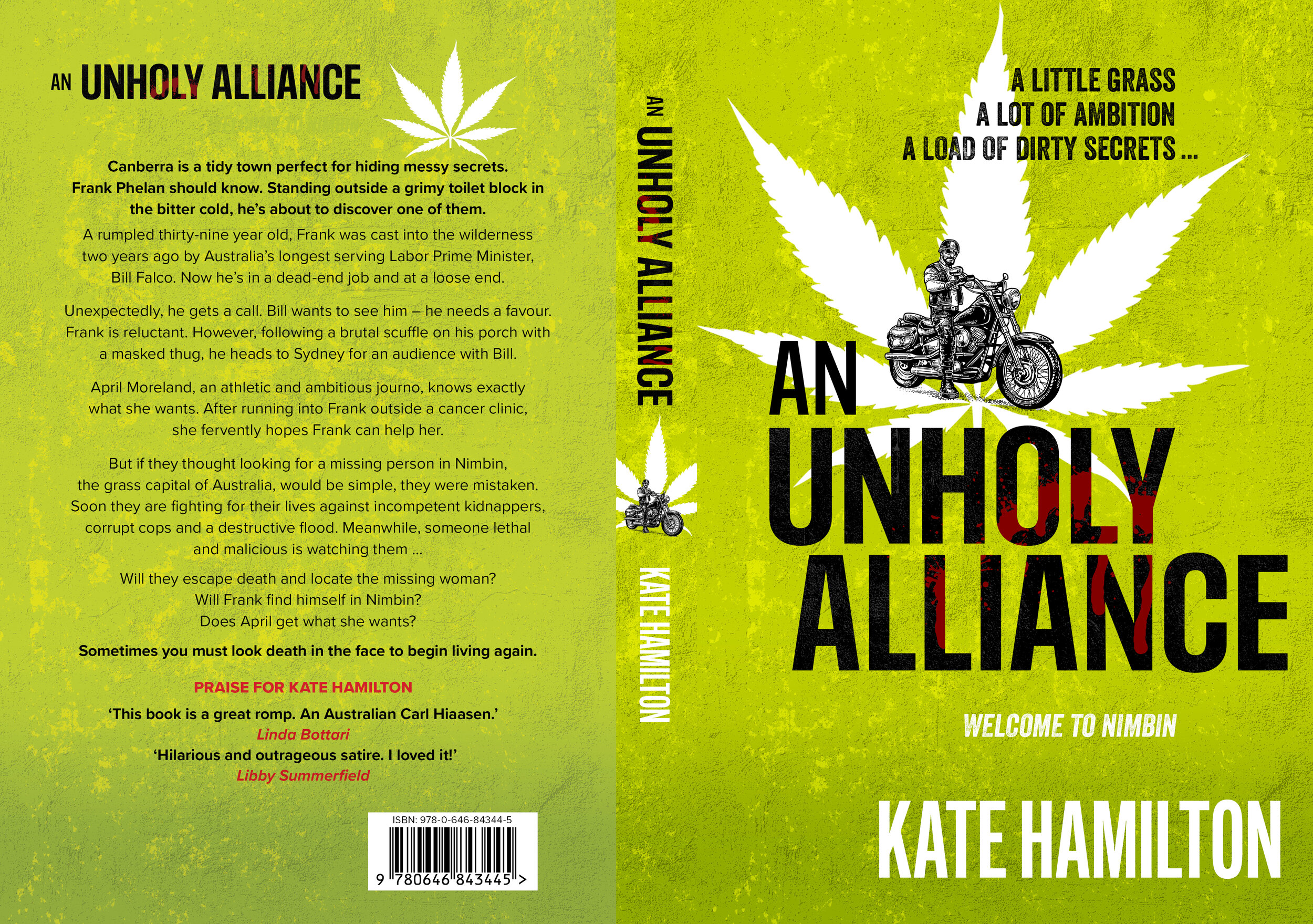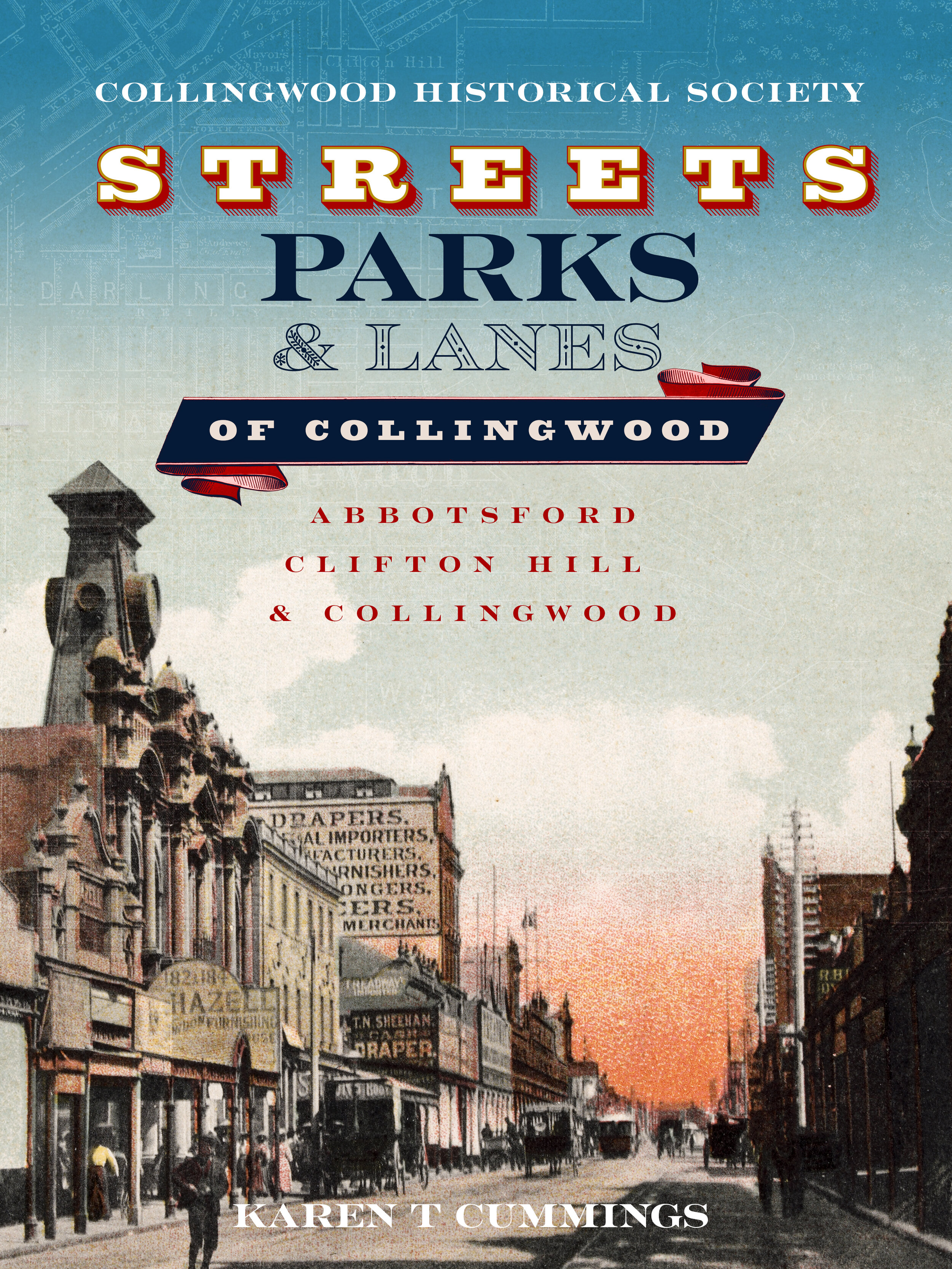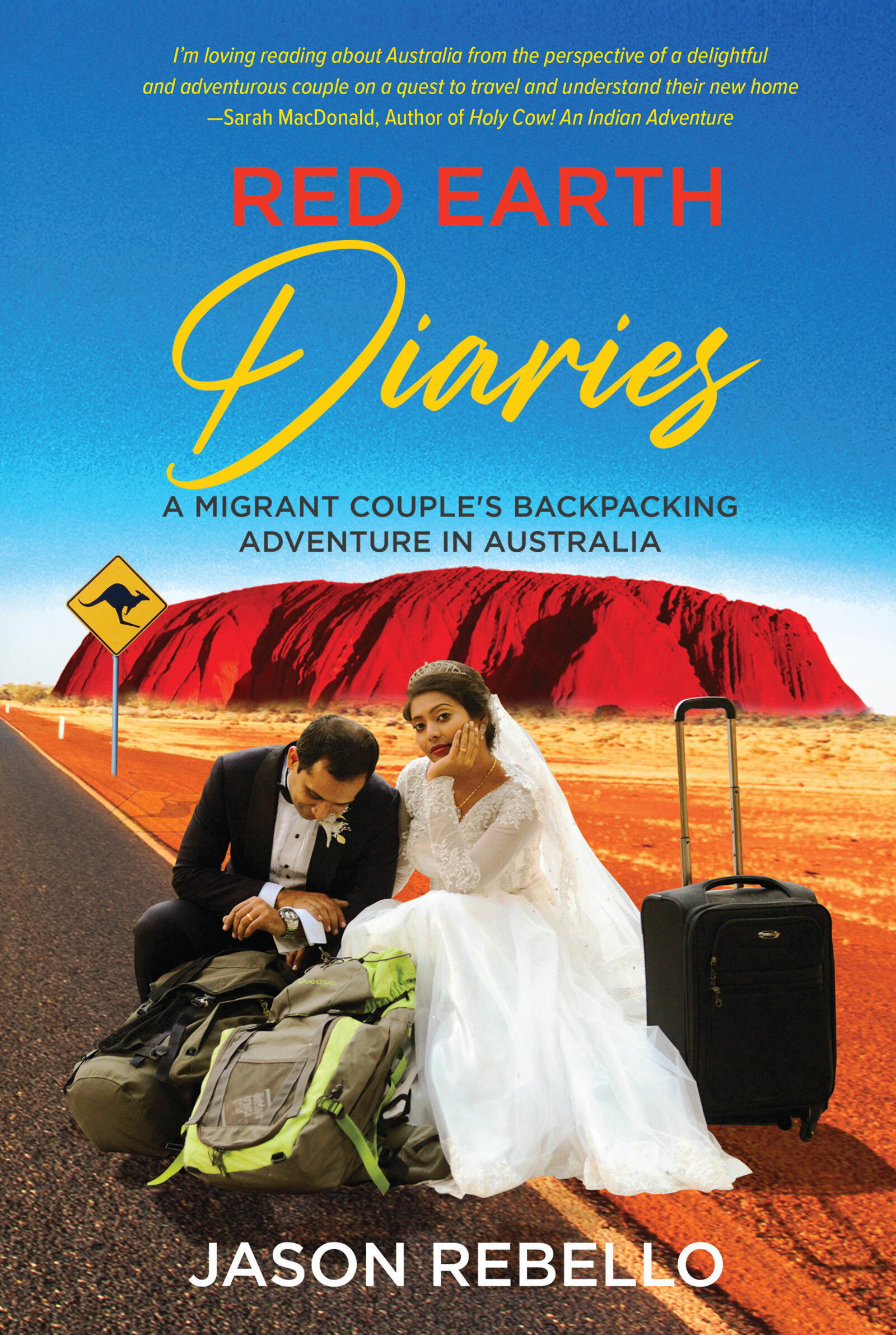Though somewhat rarer than they used to be, half title (or bastard) pages sometimes appear at the beginning of books, followed by a blank verso page and then the full title. The practice of half title pages arose as a means of protecting the full title page from the wear and tear of the printing and binding processes. Of course, an alternative solution would be to simply add a blank page, and indeed, some book designers do exactly that. When books have to lose a couple of pages to fit into a certain page signature, the half title is the first thing to go. Personally, I think some publishers like the extended throat clearing involved in blank pages, half titles, full titles, endless prefatory pages and so on because it distinguishes their work of literature from other less exalted works that get down to business within half a dozen pages. It is a bit like those high art movies that start by listing all the nested organisations responsible for the production of that particular masterpiece — the list is sometimes startlingly long.
Birds of Prey by David Hollands
Eminent naturalist David Hollands has released his latest magnum opus and we highly recommend it to all lovers of Australian nature. David Hollands’ Birds of Prey Australia contains a beautifully written chapter on each of the birds of prey found in Australia. The photos were all taken by David in the field. Full of fascinating insights and amazing images, the book is available from his website, and from many bookstores. David has many earlier titles available such as Cranes, Herons and Storks of Australia, Owls, Frogmouths and Nightjars of Australia and Waders, the Shorebirds of Australia, among other titles.
Naturally Supporting Cancer Treatment by Jenny Graves
Author Jenny Graves has just released a very well written and meticulously researched book (Naturally Supporting Cancer Treatment, available here) on supplementing cancer treatments with “evidence-based ways to help prevent cancer formation and and recurrence, and assist treatment”. Jenny plans to promote her book in various cost-effective ways, and emailed us with the following specifics:
“Because of the subject matter, I’m targeting other naturopaths, some of whom don’t have much knowledge about treating cancer patients, and also for them to stock in their dispensaries to sell to their patients. I’m contacting the universities offering naturopathic degrees to see whether they would suggest it to their students as associated reading or even as text books.My local health food store has told me that they will stock it in their two stores locally, but the manager is also on the board of the company (Go Vita) and I’m hoping that they will stock it nationally and publish an article in their magazine to promote it. I have a Business Facebook page at www.facebook.com/NaturallySupportingCancerTreatment and my website, www.naturallysupportingcancertreatment.com.au is due to go live shortly, with plans to produce blog articles regularly on it and a regular newsletter containing those articles to be sent to those who sign up on the website. I have an author page on Books2Read, https://books2read.com/b/3LwPzN?edit=maybe-later and their Universal Book Link, https://books2read.com/NaturallySupportingCancerTreatment. I’m toying with the idea of using a media publicist if I can get over my terror of speaking in public. 😊 I’ve also got plans to submit articles to various websites for them to publish as a Guest Author. I may put my toe in the water with Facebook and Google ads, but I believe that they can be something of a money pit unless you get them right, so I’ve been doing training courses on those.”
Shirley la Planche, author of The Fatal Path
Shirley La Planche emailed with a brief account of the recent progress of her excellent thriller The Fatal Path.
“It’s not easy being a self-publisher but I’ve sold more than 100 books to friends and associates and the reports back have been fantastic – couldn’t put it down, read until finished, great plot, scary – sort of comments that are what a thriller should do. Now I’m looking at ways of getting it into mainstream media which his not easy for a self-publisher because reviewers prefer to deal with a big publisher.”
This excellent, fast-paced book is available via the Mosh Shop and Amazon. Initial reviews on Goodreads have been positive.
An Honest Broker
Music historian, composer and critic Ted Gioia has penned an interesting essay on Substack about being ‘the honest broker’ in your particular field. Someone honest who knows how to get things done, how the particular system works and the key players. No matter how shonky and uncertain the particular field of endeavour, and how many sharks circle in those particular waters, there is always an honest broker, if you look hard enough. Well may we all strive to be that person to our customers, assisting rather than exploiting.
WorkingType Design Samples Online
To view many and varied samples of our cover and book design work, try some of the links below:
Print folio by category: http://workingtype.com.au/index
Book Folio: http://workingtype.myportfolio.com
Full design archive: https://goo.gl/photos/6dzV55fEW6GgGVE59
Reedsy: https://reedsy.com/luke-harris
Recent Design Work and Blog Posts: http://www.workingtype.com.au/blog
Twitter: workingtype
Recommended texts for Independent authors:
Independent authors are faced with a bewildering new world when they attempt to promote their books on snd offline. The following authors and sources do an excellent job of making sense of the contemporary publishing and promotional landscape, and all are worth reading.
Euan Mitchell's Your Book Publishing Options
How to Be an Author from Fremantle Press
Let's Get Digital by David Gaughran
Ricardo Fayet's How to Market an ebook
Amazon Ads Unleashed by Robert J. Ryan
Amazon Selling Services from Helium 10
Author 2.0 Blueprint by Joanna Penn
Online Resources and Advice for Independent Authors
If you are a veteran writer who has been in the industry before the internet boom, you may already have known what it was like when writers had to struggle with writing and even more so trying to find a good publisher. This could be why the market stayed relatively small. At least for the talented ones with limited resources and had geographical challenges.
Fortunately, nowadays, with some knowledge and the willingness to labor for your niche and craft, you finally get the opportunity. That is the chance to be able to reach an audience base that would otherwise have taken you forever to find.
Let's look into some of our recommendations of the best sources on resources for Independent Authors.
Let's Get Digital: How to Self-Publish, And Why You Should (Fourth Edition) (Let's Get Publishing Book 1) by David Gaughran
About the author:
Apart from being an author of a practical guide such as "Let's Get Digital," David writes historical fiction and science-fiction books under a pen name. This particular book has undergone revisions to meet the needs of the self-publishing writer of today, And it includes bonus resources as well. His engaging writing style is simple enough to understand but not to the point of being too simplistic. He covers the essential basics such as:
Using tried and tested marketing strategies that work to increase sales of your book
Getting the best editors without spending a ton.
Attracting more readers by improving how your brand is presented.
Making your eBooks easy to find, and so much more.
Our Take:
This book will help the new writer who wants to do it right the first time. That is, getting discovered and earning well in the process. Remarkably, it doesn't only cater to newbies but will also be a helpful resource for the more experienced writer who needs updates to this ever-changing landscape of internet publishing.
Overall, this resource is as comprehensive and as informative as you can get. It is a complete go-to reference for both the new and veteran writers alike.
How to Market a Book: Overperform in a Crowded Market (Reedsy Marketing Guides Book 1) by Ricardo Fayet
Ricardo Fayet is an author/consultant and co-founder of Reedsy, an online marketplace that connects authors with editors, cover designers, translators, and publishers. The platform has been successfully helping hundreds in marketing, online ads, growing their mailing lists, and establishing news streams of income.
About the Book
The book itself is a comprehensive distillation of years of coaching and teaching writers to become full-time authors and eventually make a good living out of their writing skills. Just be aware that some points of view of this author are not of an independent publishing writer since he works as a marketer and concentrates on the publishing business.
Nevertheless, you will find everything you need in this book on how to maximize the tools of the internet to snag better revenue and increase readership. He even includes essential tips on logo design to make your book appear even more attractive.
Our take:
This book is all about finding your market and growing it-a practical way of looking at things to help you keep your passion by being profitable too.
Amazon Ads Unleashed: Advanced Publishing and Marketing Strategies for Indie Authors (Self-publishing Guide.) by Robert J Ryan
This book goes into reaching in and tapping into a buying audience and converting clicks into sales. It also talks about what types of ads to avoid and the best practices for optimization. It does a no-nonsense look at how Amazon Ads works. Most of the time, it challenges the effectiveness of Amazon ads and offers methods on how to maximize them and make them work for you.
It takes on a more rigid stance compared to the softer views of other books. Nevertheless, being on top in sales rank and being one of the best sellers in this category does make it a credible source. This is especially if the friend who recommends it to you has already doubled their revenue.
Our Take:
If this book is recommended and in itself has sold more than the others of the same category, then it should be a must-have. Never mind that it is hard to read, provided that it is rich in reference and is an expert in the subject matter at hand, it will profit the author both in the short and long term.
Amazon Selling Services from Helium 10
Helium 10 is an all-in-one Amazon software that will help you sell your self-published book. Assembly recently acquired this software in 2019, which was aimed at helping small businesses increase their revenue through the use of content, education, and community. This software makes use of state-of-the-art resources that contain optimization tools that are intuitive and useful to help you grow your business.
It focuses on research and boosting the visibility of your product in the Amazon search engine.
Our Take:
Helium 10 doesn't claim to produce great listings directly, nor does it promise to increase your revenue for you automatically. But with its advanced management tools puts you in a position that will give you all the opportunities to promote your product on the world's bestselling platform. Not to mention that, currently, Helium 10 is an industry leader in its category today.
With over 1+ million users and 4 billion+ in monthly Amazon GMV, it lets its numbers speak for themselves. And for writers who like real-time marketing leverage using technology, this software is precisely what you need.
The Creative Penn with Joanna Penn
A bestselling author of New York Times and USA Today, Joanna Penn is also a podcaster, speaker, and an awarded entrepreneur. Enough said about her credibility. Ms. Penn has authored over 30 books and sold more than 600,000 copies in 162 countries, translated into 5 languages.
She is offering her book for aspiring writers entitled: "Author 2.0 Blueprint".
She has her website "The Creative Penn."m where she aims to help writers learn the basics of building a "platform" to market a book. She shares her personal experience over the past few years, detailing how she effectively marketed her book and generated and still generates sales as a best-selling author.
Our Take:
Her book "Author 2.0" is now available for free of which can be downloaded directly from her site after you sign up. The book itself is not about writing your best but how to market after writing your masterwork. Learning the pros and cons of publishing with necessary apparatuses like advances, contacts, and royalties, all these coming from the pro herself, is definitely worth the read.
Conclusion
Today, the book publishing landscape for authors has been turned on its head, as it carries both opportunities and some risks. Even minute details like logo design may make or break your masterpiece Self-publishing has finally arrived. And investing in your education on how to do it ultimately pays well in the long run.
Writer: Kieran Fallon is the owner of Logo Design company Éire Graphic Design. We are here to help your organization become more memorable through designing striking logos, eye-grabbing flyers, posters that pop, exciting animated emails and dynamic lightweight digital advertising campaigns – always backed by flexible and insightful support.
The Secret of the Grand Hôtel du Lac audiobook
Accomplished local author Kathryn Gauci has dipped a toe into the audiobook world and recorded a version of her highly rated The Secret of the Grand Hôtel du Lac. The print edition has an impressive 877 reader reviews and her other books are very much worth checking out.
Book Cover Designs for October 2021
The usual wide variety of topics and typefaces and approaches this month. Never a dull typographic moment…
10 Useful Photo Sites for Book Cover Images (Paid + Free)
Guest post by Ivy Attie
Although you are not supposed to, judging a book by its cover is a skill we all employ from time to time. Whether standing in a queue at a bustling bookstore or reviewing thumbnails on our favorite digital platform — the cover is often the only element we have time to peruse.
If you are a writer, you will agree that you usually don’t have the time or the resources to carry on a customized photoshoot for your book covers. Especially if you are an independent publisher, you may not boast the budget to hire a professional illustrator to do the artwork for your book. In that case, stock photographs come to the rescue and provide you with readily available material for book covers.
What Are Stock Photographs?
Stock photos are a repository of pictures or illustrations taken by photographers. They are available in numerous categories, are high quality, and boast similar attributes as a professional shoot.
Most of the stock photo sites offer images for free. However, various reliable stock agencies charge a nominal amount for the license they provide. These agencies have professionals working for them who ensure the images they receive are from the copyright holders. The images are also more competent and less overused than the ones available on free photo sites.
But of course, the final choice of agency depends on your budget. To help you make the selection, here is a list of stock photo sites, both - paid and free, for your print and design needs.
Best Paid Stock Photo Sites
Let’s start with some of the best sites where you can get high-quality stock images.
1. iStock
iStock by Getty Images offers an exclusive and extensive collection of photos, vectors, illustrations, videos, and music clips. They have over 20 years of presence in the stock photo industry and curate some of the most outstanding genre images for your publishing needs.
When it comes to pricing, iStock is not the cheapest. However, they have some flexible payment plans that let you choose between monthly and yearly plans along with single image purchases, on-demand packs, and bulk purchases. You can also take advantage of an iStock discount and save money on your purchase.
2. The Stock Alchemist
The Stock Alchemist is a boutique-style stock photography site that specializes in book covers and album sleeves. The exclusive collection is hosted by Regina Wamba, a renowned personality popular for her creative brains.
Here, you will find a range of book cover options for different genres, including romance, science fiction, and dystopian. You can download a low-resolution file for free. However, a substantial fee applies to each image for license and high-quality versions.
3. Shutterstock
Shutterstock offers one of the largest collections of stock photos and vectors. They also regularly update their database, so you will be no short of choices on this platform. One of the best features of Shutterstock is that it allows online editing directly from the browser, besides integration with Adobe Creative Cloud apps.
The pricing plans of Shutterstock are pretty manageable. Besides on-demand packs, the company offers subscription plans for teams and enterprises. You can also receive a free trial of 10 images for a month. All you need to do is sign up with their services and receive your free credits.
4. StockPhotos.com
Stockphotos.com is probably one of the newest additions in the stock photo industry. Created by a team of stock photo experts, the site completes all the requirements you have for a photo site and more. New pictures are also added daily to the site.
One of the best things about stockphotos.com is the resource page. Here, the team covers everything you need to know about stock photos, licenses, and editing limitations. So, if you are still discovering the industry, this is the website you should visit.
5. DepositPhotos
DepositPhotos is one of the most affordable options on this list. It boasts an exquisite collection of pictures, vectors, illustrations, and videos with a royalty-free license. The license allows you to use stock assets in any way you want without giving attribution to the original owner or the agency.
The pricing plans for DepositPhotos start at $9/month. You can choose to go with either bundle subscription packs or on-demand packs. An app for iOS and Android is also available for members to pick pictures on the go.
Best Free Stock Photo Sites
Now that we've covered some paid options let’s look at the free stock photo sites for budget-conscious authors. Before using images from these sites, you must check out their license details & terms and conditions to remain legally safe.
6. Pixabay
Pixabay is a go-to solution for designers and marketers looking for a quick and free option to fill the visual gap in their projects. It contains a massive database of more than 2.4 million photos, vectors, and illustrations.
Pixabay operates under its own license that allows anyone to use the pictures wherever they want. You also don’t have to give credits to the original author (even though it’s a good idea to do so).
7. Pexels
Pexels is another free photo site you would definitely enjoy. And just like Pexels, you can use the images found here any way you want without giving credit to the original photographer. The collection is extensive as well, with new photos added daily.
One of the best features of Pexels is its search filters. You can quickly vet down your choices through the easy-to-use interface according to the niche, subcategory, orientation, and even trending topics. You can also modify the size of the picture you download - saving you tons of time in post-processing.
8. New Old Stock
As the name implies, New Old Stock is slightly different from the others present in the stock photo game. This site features pictures from the past era - primarily black and white for the history buffs out there. So, if you are writing about history or nonfiction, this site is for you!
Images presented here are available under the public domain license. This means that all pictures are available by the public and for the public - without any cost.
9. StockSnap
Another freebie stock photo site is StockSnap. The pictures offered here are free from copyright restrictions and can be used in any way you want.
One of the best collections at StockSnap is their landscape and scenery collection. If you are curating pictures for a travel-inspired novel, this site is a must-check. You can also choose the images you find here and integrate them with other artworks to create a unique yet beautiful book cover picture.
10. Unsplash
Last but not least is Unsplash. In fact, a list of stock photo sites will be incomplete without the mention of Unsplash, as it has one of the largest free stock photo libraries with over 1.5 million assets. And just like others mentioned in this list, Unsplash boasts a well-curated collection of professional photographs.
All the photos found here are entirely free to use. They can be used in any project, including personal and commercial, without giving attribution to the owner.
Final Words
Hopefully, the above 10 sites will give you a good start at designing your book cover. Do your research before making the final choice to ensure you are using the pictures legally and ethically. And if you are looking for professional help, feel free to contact us at Working Type to let us handle your book. Happy publishing!
Book Cover Design for September 2021
A few of our recent covers and cover drafts, covering the usual broad range of subject matter. Striving for high contrast and high impact and interesting type combinations.
Email marketing your book — some practical advice
Some advice to authors planning to market their books via email, from experienced editor and author Dr. Euan Mitchell:
Email programs are getting better at detecting advertising material.
Especially if the salutation is not to a specific person's name.
Including an attachment also increases the chances of it being filtered out.
I suggest the best way is to first send an enquiry email to the organisation concerned without an attachment or any advertising copy in the email itself.
Simply ask who the editor of the organisation's newsletter is. This only takes a sentence or two. In that first email, do not explain why you are asking.
Let them ask. And even if you are starting by emailing the organisation's general email address, you should soon have a reply and a person's name to start with. Importantly, the current person, not someone from years past.
The pitch should not be: "Here's my fascinating book, please buy it." People get similar emails all the time and block the sender.
Start a dialogue with an enquiry email, not an ad. If the organisation has a newsletter then it has space to fill on a regular basis. The author might be able to help out : )
Depending on the organisation's main interest, the author might be able to contribute a few quotes or anecdotes to an article.
These contributions need to be customised to the organisation's interests according to the person who answers the emails.
Funnily enough the contributions can include a plug for your book, even if just a footnote at the end of the article. This subtle way of advertising the book should be more effective than a straight-out ad because the author has first been introduced to the reader by the organisation the reader subscribes to.
In summary, the approach shifts from generic inbox drops to personalised email enquiries (or phone calls) about organisations' newsletters without initially mentioning the title.
Don't lead with your chin. Get a dialogue going first. It takes time but the success rate is much higher.
Euan’s excellent practical guide Your Book Publishing Options is available from Amazon.
Steve Nurse Discusses his New Book "Cycle Zoo"
Steve (right) with Jesse Heath, OzHpv Challenge 2021 Photo John Hagan
There is a saying in recumbent bike manufacture, “The best way to make a small fortune making bikes is to start with a large fortune” and the same thing can be said about self-publishing a book. Its hard to rely on self-publishing to make money. It might happen, but don’t bank on it! In the first instance self-publishing should be about wanting to get your message out.
To get to my book story, I have been building and designing bikes since about 1987, went on the first long-distance rides on bikes I’d built around 2000, and wrote the first version of my Cycle Zoo book in about 2009. Back then I wrote, edited, illustrated and laid out the whole book, and supplied finished pdfs to Publishing Solutions. They then organised the ISBN and printing of about 1000 copies.
After that it was up to me to sell and distribute the books but that was difficult. Sometimes I’d take books to bookshops to sell, and they’d never pay. It was impossible for me to sell all the books, so I still have boxes of books in the back of cupboards at home. However the first edition of the book helped with entry into an industrial design master’s degree which gave me paid work designing bikes for 2 years. Putting it out was worth it just for that.
I’ve stayed in touch with a couple of the contacts I made after the first book. I designed a cycling board game and Anki Toner put that on his cyclingboardgames.net website. Link here. And I was interviewed by Chis Starr at 3cr. I usually attend local recumbent bike gatherings and this didn’t stop. As well I’ve kept on building bikes, and became the editor of the Australian Human Powered Vehicle Magazine Huff.
Somewhere along the way I got the urge to write a book came again, and I had enough new material to add to my previous book so set about rewriting Cycling Zoo. Fairly early in the process I got editor Neil Conning and book designer Luke Harris on board. I conversed with and interviewed a few people involved in cycling to broaden the book’s appeal, and I’m happy how the stories came out. So Adam Hari about spoke about speedbikes, Gayle Potts about refurbishing bikes for refugees, Nell Sudano about electric bikes and teaching cycling, and Alyson Macdonald about boardgames and her cycling.
Publication for the new book is by print on demand, so the book is available anywhere in the world, and is printed in quantities as small as one in the nearest printing centre including Melbourne, the UK and the USA. I have ordered and sell or give away copies for myself, family, friends and reviewers. Normally I will give away books to reviewers. An example is Chris Starr who volunteers for and runs the Yarrabug Cycling show on 3cr.
Where to buy Steve’s book:
After a phone interview with Chris, she mixed the show and put up a podcast page for the show, a resource I can use to let people know about the book. She deserves at least a free book for her efforts. The weblink is here .
Anki Toner really only wants to document every cycling board and card game no matter how obscure, and a lot of these are based on European races such as the Peace Race, Tour de France, Vuelta D’Espana and Giro D’italia. An example is here, analysis of the games is well researched and concise. But he was happy to showcase a new game I had developed and put online, called Cycle Challenge. He’s included a link to my book page in his excellent coverage of my game which is all you can ask for.
Adam Hari features in my chapter about speedbikes, which are fully enclosed, highly aerodynamic cycles designed to break speed records. I was happy to mail him a book at cost, and he was happy to publicise it on his Instagram, showing a video of the book pages involving him and his machines.
Coming up in early October I will be part of the Laidbackbike report Youtube series but meanwhile I will continue improving websites, contacting potential reviewers, contacting those mentioned in the book, and working on ebook versions. I put a book poster on the side of one of my bikes yesterday and have already been asked about it (a mum and her kids caught up to me on their electric bike and were chattering furiously) so will work on improving that too.
Have fun promoting your book. Selling oodles of copies and making money might be your initial aim but you might come away with something more valuable..
Leaning trike with poster.
Amazon KDP now printing in Australia
After years of printing in the US and shipping all the way to Oz, Amazon has finally opened a printery in Australia to service print on demand customers. This is very good news for independent authors, especially that subset who want to concentrate on Amazon. IngramSpark’s service has many pluses, but it interposes a layer between the author and Amazon, and costs a good deal more, particularly when authors wish to upload updated book files. With the new printing facility, Australian authors will finally be able to order author proofs and copies.
With the new printery, postage costs will be reduced and turnaround times improved. Here is the Amazon page addressing the topic.
How Can Proofreading Drastically Improve Your Writing?
Writing your research paper, essay, article, or press release without proofreading is like drinking coffee without sugar—it can be bland, bitter, or so and so—but will never be perfect. Proofreading is an intricate skill that involves concentration, patience, and precision. But would you be glad to know that proofreading significantly improves your writing?
With that said, here's more of how proofreading can drastically improve your writing:
Proofreading Saves You From Making Future Mistakes
The most valuable advantage of proofreading is the collected information and skills you gain, which serves as resources that will help you avoid future errors.
According to professional proofreader Dianne Wadsworth of Gumhill Proofreading, "A writer is as good as his work. Thus, writers can enhance the overall quality of information and content on their write-ups by removing errors from their writing routine."
The practice goes true for everyone—a deliberately recognised flaw (discovered via proofreading) is a very well-learned fault that won't be replicated in your future works.
Proofreading Makes You Confident As A Writer
When you fix your flaws over and over, you'll eventually see that you're improving. Consequently, your improvements are your ultimate source of motivation and confidence as a writer. Furthermore, consistent proofreading gives you the courage and drive to continue improving your work.
Proofreading Aids In The Optimisation Of Your Work
What would you do if you were a student required to produce many essential custom essay papers? How many drafts are you going to have? How many times are you going to proofread? What are your strategies for your documents?
You can remove even the slightest inconsistencies, significantly optimise and enrich the effectiveness of your finished work by proofreading and reviewing it with fresh eyes.
Proofreading Improves Your Vocabulary
You may increase your vocabulary by proofreading somebody else's work. You'll probably benefit from this experience and understanding since language is an essential element determining a writer, a persona, and a business.
Proofreading Helps You To Be More Patient
Patience is a rare quality that only a few individuals nowadays possess. Everyone is in a rush, and time is running out.
Proofreading is a time-consuming procedure that may help you come to terms with yourself. It keeps you focused solely on a single task at a time and prevents you from feeling hurried. You'll miss the purpose of proofreading or the goal of good proofreading if you rush.
A patient person is a patient writer, which is something very indispensable. Why? Because the character, expertise, and abilities of the individual who produces a written piece determine its value. Patience is vitally important!
What's Next After Proofreading?
As SEO writer Mary Samson of Write Fuel puts it, "Proofreading is an essential component of effective writing. Because writing is a multi-step process, you must consider proofreading as a separate but equally essential component of the same process of writing. On top of that, proofreading improves your writing because you're getting conscious and meticulous along the way."
Overall, proofreading aids in the development of vocabulary, the correction of errors, and the enhancement of various cognitive abilities and characteristics such as patience, problem-solving, innovation, perseverance, confidence, and so on. With these, you may readily deduce that proofreading helps you become a more rounded writer and person.
Then what's next? After thorough proofreading and editing, never let your writings sit on your desk—dusty and unread. Publish it and let it serve its value for those who need it.
Since your work is a masterpiece, you should partner with nothing but the best. Connect with the Working Type for your design, layout and printing needs.
Guest post from Chloe Harris.
Book Covers for August 2021
A few recent book covers, from thoughtful spiritual tomes to legal advice…
July 2021 Cover Designs from WorkingType Studio
The usual variety of subject matter — book cover design is never boring. Literary fiction, crime fiction, children’s books, business advice and local history. “Fragile Power” uses variable typefaces (Acumin), which is a powerful new design tool.
8 Steps to Self-Publish Your Book Like a Bestseller
Guest post contributed by Chloe Harris
If you have an idea under your belt that you genuinely believe should reach a wider audience, consider publishing your own book. Historically, authors need an agent who can convince a publisher to take a look at their manuscript. In fact, many publishing companies work only through established agents, which makes it difficult, especially for first-time authors.
Self-publishing may sound outlandish, considering all the work needed to be even noticed by readers. But with meticulous planning, creativity, resourcefulness, and proper implementation, your book can be the next bestseller.
1. Edit Thoroughly
Even you’re self-publishing, the book will go through the hands of people who will judge it. Minor errors can hinder its success. If you’ve never edited a book before, here’s a guide on how to edit a book.
Do the following to get you started.
Wait at least a week before editing so that you can look at the book with fresh eyes.
Review the plot and characters. Take note of significant structures. For example, do the characters have dynamic personalities? Is the conflict sensible? How is the audience going to feel about the ending?
If you’re not ready to edit the significant elements, start with line edits. Are you using the right voice?
2. Ask for Feedback
Feedback is invaluable. The book may sound perfect to you, but are you sure that’s how readers would feel? Share your manuscript with trusted individuals and ask for feedback.
To help them make more candid feedback, create an online form to share opinions on specific elements. Also, ask them how you can improve.
Feedback may be obtained from friends, family, book critics, and writing communities.
3. Format Your Book Properly
“A professionally-formatted book sends a good impression. This part can be a bit more complicated for self-publishing authors because your book must be 100% ready for publication after this. Many authors are anxious about formatting; after all, it’s an entirely different skill from writing.”, explains Direct Appliance Rentals CEO Karina Wolfin.
Here are some formatting options.
Free formatting software: Apple Pages and Kindle Create provide free templates. However, they also cater to their own platform, which means all or some formatting options will be discard when you upload to other retailers.
Paid formatting software: Vellum ($200) and Scrivener ($45) creates beautifully formatted print versions and E-books. Plus, you can format as many files as you want with a licensed account.
Professional typesetters: For print on demand, authors usually hire a typesetter to ensure immaculate formatting. This is the most viable option, especially for printed editions, because you don’t want unevenly spaced text and images.
4. Choose a cover that converts
The cover creates the first impression to the readers. A strong cover is attractive and lets those who see it know that the book was made for them.
Consider these tips for the book design.
Striking yet sophisticated. Whether it’s a photo, an illustration, or typography, the cover should look professional.
Indicative of the genre. Some design elements are associated with specific genres. Your book cover must conform to these principles to reach the right audience.
Spine and back cover. This is only for printed versions.
Unlike formatting, the cover should be made by a professional. This is your most crucial marketing tool, and you shouldn’t take risks.
5. Maximize Your Book Description
The book description is another element that can attract readers. Here are the basics of writing a good description.
Hook the readers. Use a dramatic headline, such as a quote from a book or a strong review from a known critique. The point is to intrigue the readers.
Introduce the storyline. Don’t give away everything, though! Instead, give readers a sneak peek of what they’re going to find inside.
Create a cliff-hanger. End the description with a hint of a shocking twist or an intriguing question.
Read the descriptions of some bestsellers of the same genre, and you’ll definitely see a pattern.
6. Prepare the launching
The launch will raise awareness and jumpstart the hype about your book—just like a movie trailer.
Consider including the following in your launch plan.
Build a website. A large fraction of modern-day consumers rely on the internet for information; therefore, your book should be there. Hire a web designer to build a dedicated website for your book and follow the pointers we gave for the cover design.
Ask for the support of family and friends. People will be looking for social proof, so it would be beneficial if your family and friends promote your book on their social media accounts.
Ask for book reviews. Contact known book reviewers and politely ask them if they can review your book.
Organise a virtual launch party. Partner with influencers and send them party packages. Give a speech and ask attendees to share their thoughts about your book.
7. Publish
You’ll be glad to know that self-publishing can be fast on Amazon and other platforms.
For printed editions, the process is a bit longer. But you should have no trouble if all the materials are ready.
8. Market Your Book
The work doesn’t end after publication. The marketing campaign has started during the launch, but you still have more legwork to do.
Reach out to relevant blogs and ask if you could write a guest post to promote your book.
Organise events at bookstores. This can a signing, reading or Q&A.
Work with a third-party advertising agency. Self-marketing can be exhausting, especially if your fan base is still in its early stages stage. Instead, consider hiring the services of an ad agency that specialises in reading materials.
With so many titles being released each year in Australia, it can be hard for your manuscript to find its way to the publisher’s desk. If you think self-publishing is the best method for you, contact WorkingType for design and print solutions.
A Backpackers Progress
Jason Rebello’s excellent Red Earth Diaries about his travels around Australia as a newlywed is due to launch soon, and he has left absolutely no stone unturned in placing information on all the social media services and print on demand and ebook services. Here are some of the links…
The book is available for preorder on the below online bookstores (more will be added in the coming days):
Amazon, Kobo, and Booktopia, Barnes and Noble, Google Books and Apple
Travel and Inspirational Blog: https://theevolvingbackpacker.com/
Author Website: https://evolvingwordsmith.com/
Instagram: https://www.instagram.com/theevolvingbackpacker/
Facebook Page: https://www.facebook.com/TheEvolvingBackpacker
Twitter: https://twitter.com/wordsmith_jason (wordsmith_jason)


















